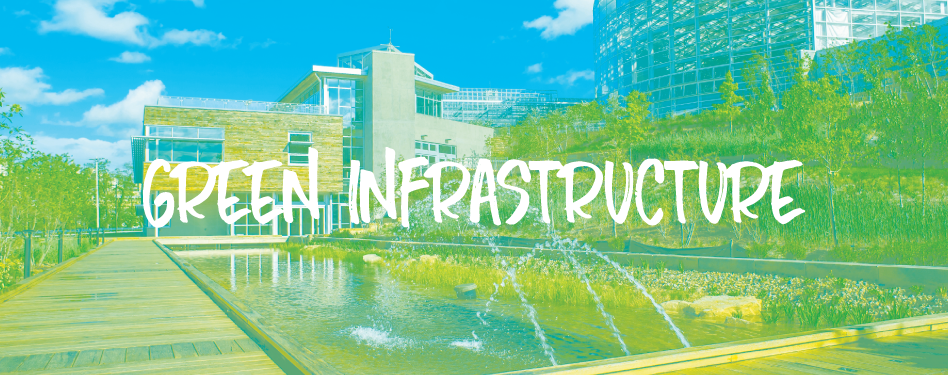
Cities are looking to green infrastructure to align sustainable development efforts and to foster social and economic development. In this article series, we have reviewed green infrastructure’s many benefits, its presence in climate action planning, ways to optimize its impact and strategies for how best to avoid social equity pitfalls.
USGBC and GBCI are well positioned to help cities incorporate these strategies into tangible green infrastructure development with market-leading tools like SITES, LEED and Parksmart. These systems provide frameworks that validate best practices and that can be used as useful guides for green infrastructure development. Individually and collectively, these rating systems ensure that best practices are being strategically implemented through an array of initiatives.
These three rating systems can be used independently or in tandem to maximize a project’s green infrastructure development. For example, if you are seeking to further define, improve or demonstrate the site sustainability aspects of a project, you can benefit from pursuing both LEED and SITES certification by taking advantage of the synergies and equivalent credits between LEED and SITES.
Driving green infrastructure through LEED
Green infrastructure is most prominently rewarded in LEED’s Sustainable Sites and Location and Transportation credit categories. The Sustainable Sites category presents opportunities to incorporate naturally functioning landscapes that increase ecosystem services. Location and Transportation credits reward projects that protect sensitive land and that encourage high-density infill development that reduces impervious surfaces.
In addition, LEED drives project teams to improve energy efficiency by investing in green infrastructure that provides shading and wind protection. For example, green roofs add insulation and extend the lifetime of roof materials, reducing both energy demand and life cycle material costs. Reduced building footprints preserve land for high-performing sites that can use permeable surfaces, catchment systems and water-efficient landscaping to reproduce natural conditions and achieve Water Efficiency credits.
LEED for Neighborhood Development advocates incorporating green infrastructure into buildings, landscapes and the many connecting spaces between. This rating system includes a Green Infrastructure and Buildings category, which accentuates the importance of green infrastructure at different scales throughout cities.
LEED for Neighborhood Development recognizes green infrastructure as a tool for creating complete and livable communities, which limit resource use and automobile dependence. Green infrastructure can support the intended outcomes for a range of credits related to habitat and sensitive land conservation, community space access, brownfield redevelopment, livable streetscapes and local food production.

Phipps Center for Sustainable Landscapes, in Pittsburgh, Pennsylvania, used green infrastructure as one of its strategies to achieve SITES and LEED certifications.
SITES as verified green infrastructure
SITES provides guidelines and verification for innovative practices in tailoring green infrastructure to achieve conservation, restoration and public health goals. As of October 2016, certain LEED and SITES credits can be applied reciprocally.
SITES has a strong conservation focus and establishes guidelines for protecting sensitive land and habitats. It offers incentives for projects that restore landscapes to replicate natural site conditions, such as through reestablishing natural hydrology, soil makeup and vegetation.
Green infrastructure can also help contribute to credits that measure human health and well-being. Green roofs, green walls and bioswales turn underutilized areas into spaces that support recreation and relaxation, civic engagement and urban food production.
Optimizing infrastructure through Parksmart
Parksmart addresses an often overlooked facet of the built environment: parking infrastructure. Parking structures often include large, dark, impervious surfaces, which make them a significant source of polluted runoff and a local heat island.
Parksmart recognizes projects that use green infrastructure, including green roofs, green walls and permeable pavers, to mediate these ecological challenges and to transform parking structures into community assets. Additionally, by encouraging carpooling, car sharing, bicycling, and alternative fuel vehicles, Parksmart helps expand more sustainable transportation choices.
Advancing green infrastructure
To ensure these leading practices, strategies and tools are being used in planning and development, cities can require development projects to follow an integrated process. This highly collaborative practice, which is integral to SITES, LEED and Parksmart, enables project teams to identify opportunities for using green infrastructure to meet project goals throughout the design process.
Considering green infrastructure early and often allows project teams to optimize its use for maximum benefit – such as retaining and infiltrating water and keeping cities cool. Green infrastructure initiatives help us build a brighter—and greener—future.
